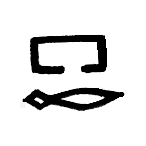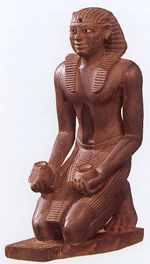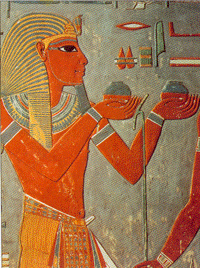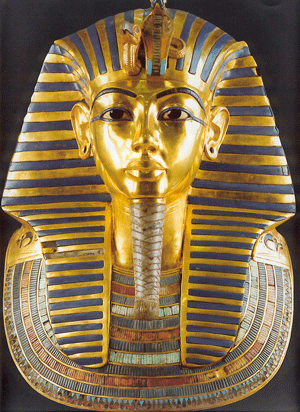|
The pharaoh statue is based on a statue of Pepi I, a ruler of the Old Kingdom who lived about 2300BC. You can see this statue on the upper right of this page. It is made of green slate. Pepi is shown offering vases of wine to the gods. This type of statue became very popular in Egypt later on. The picture on the right shows Ramses I offering the same sort of jars to the god Amun.
What does 'Pharaoh' mean? Pharaoh comes from a Greek word. The Greeks took it from the Egyptian per-aa, written like this:
Per-aa means 'great house', that is, the palace. In the New Kingdom, it came to mean the pharaoh himself. |
Pharaoh Statue |
|
|
Pharaohs Pharaohs were the supreme rulers of Egypt, believed to be the god Horus come down to earth. They were also the chief priests of Egypt. Through the rituals they carried out in the temples every day, they made sure the gods blessed Egypt with all the good things it needed - a good harvest, success in battle, and so on. Most pharaohs were men, but a few were women. The most famous are Cleopatra and Hatshepsut. Click here for info on ten famous pharaohs. Here is a list of all the pharaohs of Egypt |
How do we know it's a pharaoh? You can tell straight away that the statue is of a pharaoh. How? Because of his headdress. As the pictures show, the headdress was striped blue and yellow. It is called a nemes (nem-ess), and was only worn by kings. The nemes usually had a gold cobra and vulture at the front, called a uraeus. You can see this on the mask of Tutankhamun (see below)
Pharaohs often wore a false beard, too. You can see this on the mask above. |
|




